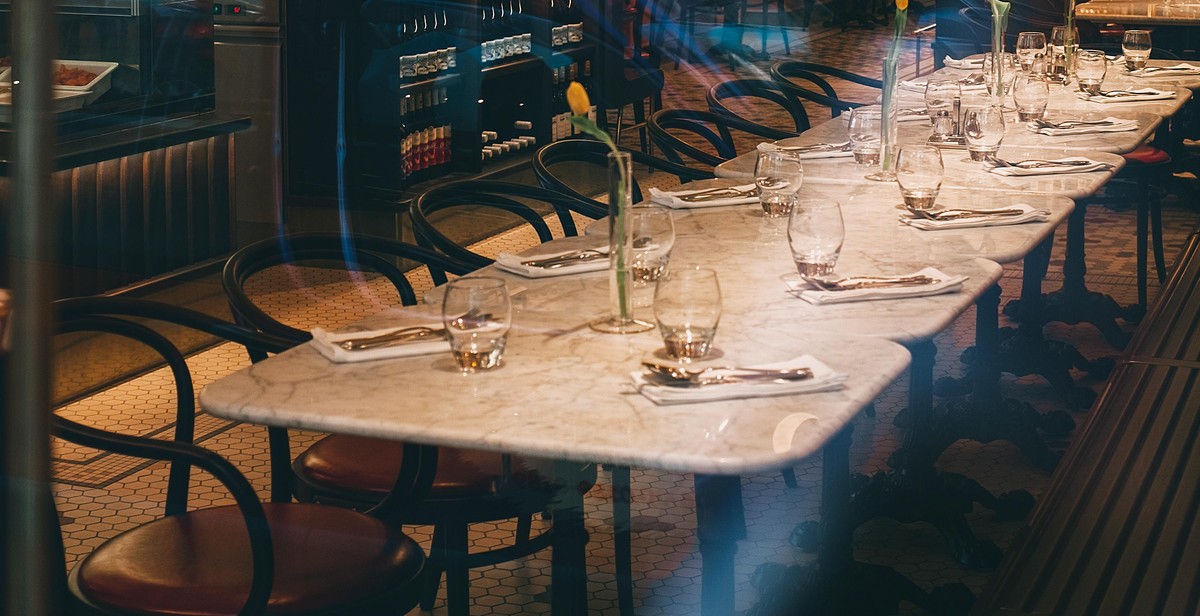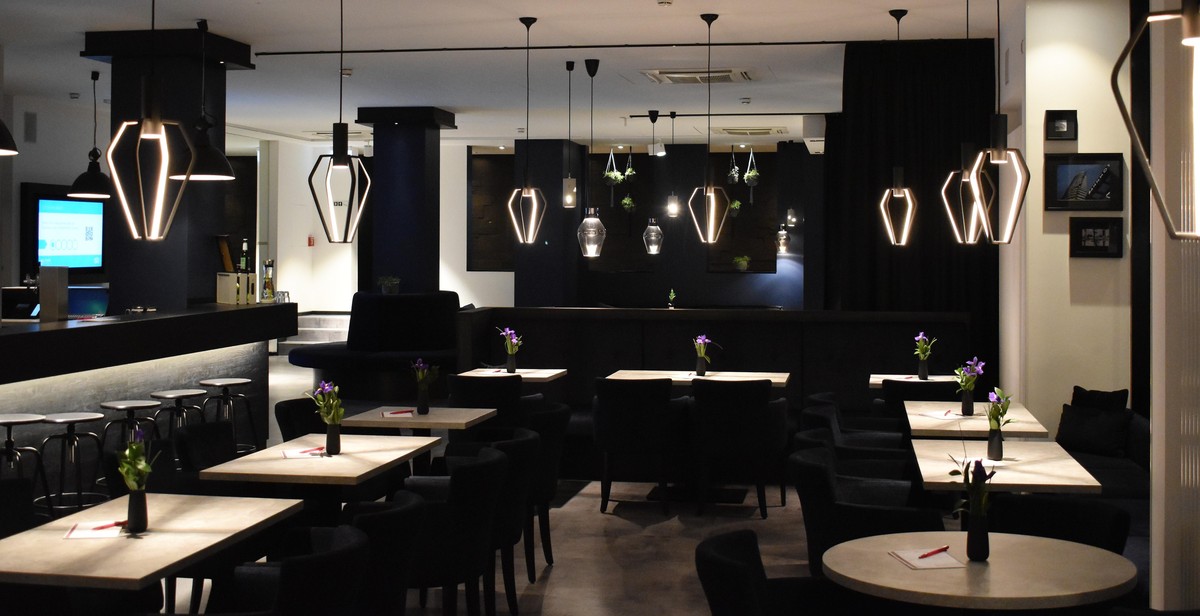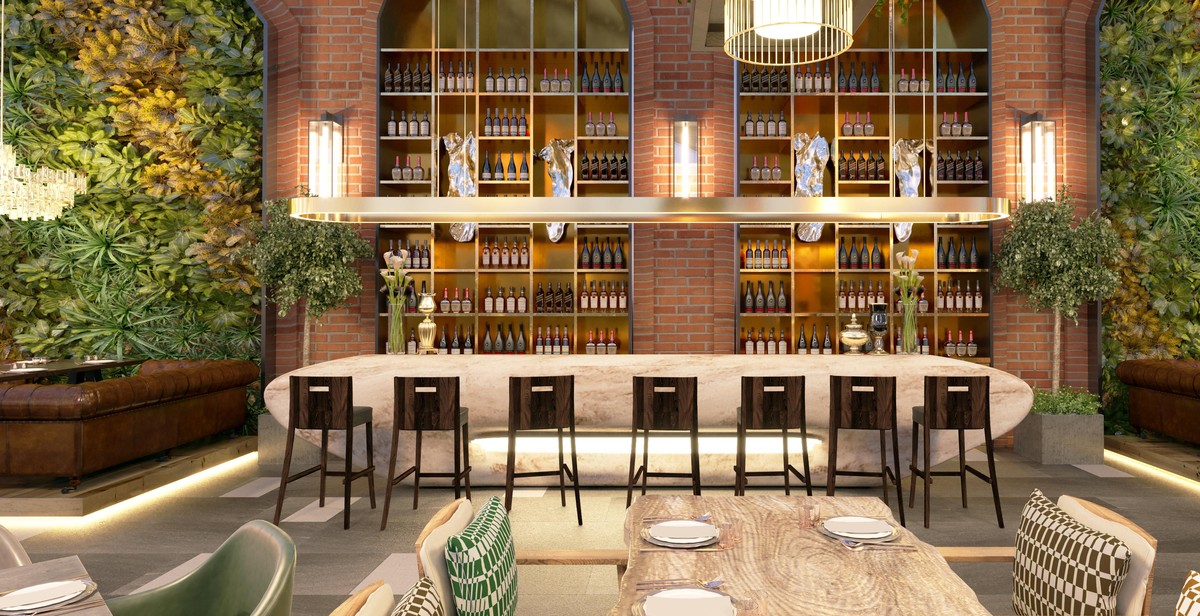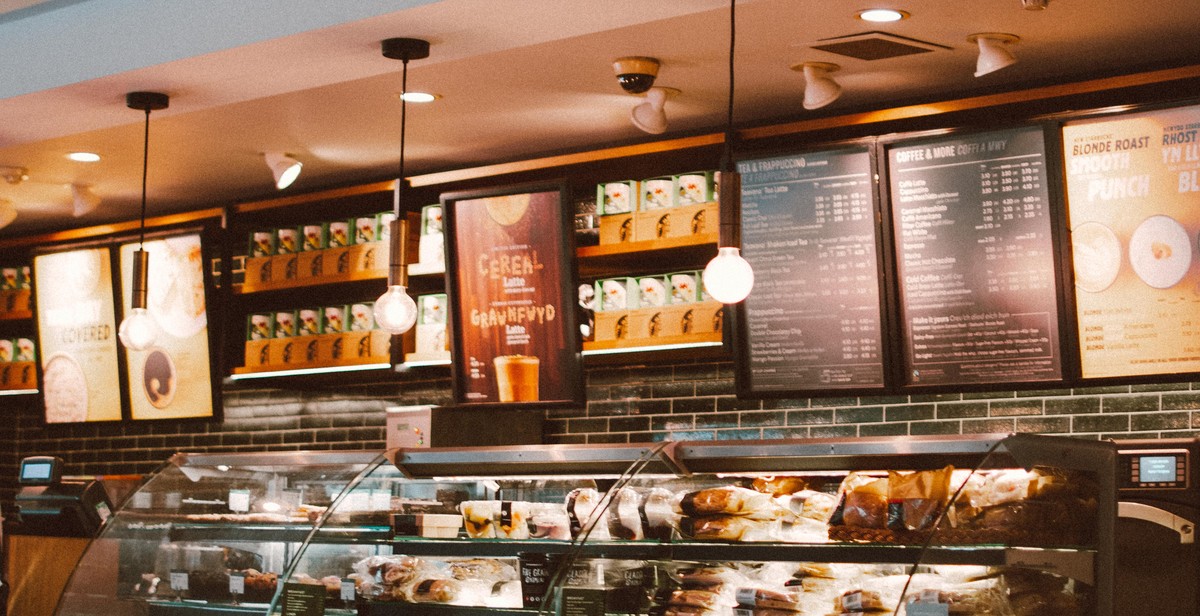How to Design an Inviting Restaurant Interior: Enhancing the Dining Experience
Designing a restaurant interior is more than just selecting furniture and decor. It involves creating an atmosphere that enhances the dining experience and draws customers in. A well-designed restaurant interior can make a lasting impression on customers, encourage them to return, and even generate positive reviews and word-of-mouth referrals.
When designing a restaurant interior, it’s important to consider the target audience and the type of cuisine being served. A fine-dining restaurant will have different design elements than a casual eatery or a fast-food joint. The ambiance, lighting, colors, and textures should all reflect the brand and the food being served.
Another important factor to consider is functionality. The layout of the restaurant should be designed to optimize traffic flow and maximize seating capacity. Comfortable seating, adequate lighting, and noise control are also crucial elements that can affect the dining experience.
In this article, we will explore the key elements of restaurant interior design and provide tips on how to create an inviting and memorable dining experience for your customers.
Understanding the Importance of Restaurant Interior Design
Restaurant interior design plays a critical role in creating a memorable dining experience. From the lighting, furniture, and decor to the layout and ambiance, every element of the restaurant’s interior design should work together to create a cohesive and inviting atmosphere for guests.
Restaurant interior design also impacts a customer’s perception of the food and service. A well-designed restaurant can make even mediocre food taste better, while a poorly designed restaurant can make even the best food taste mediocre. The design of a restaurant can also communicate the level of service that customers can expect to receive. For example, a fine dining restaurant with luxurious furnishings and high-end decor is likely to provide a higher level of service than a casual fast-food establishment with plastic chairs and tables.
Additionally, restaurant interior design can help differentiate a restaurant from its competitors. A unique and memorable interior design can help a restaurant stand out in a crowded market and attract new customers.
To achieve the desired effect, it is important to work with a professional restaurant interior designer who understands the unique challenges of designing for the foodservice industry. They can help create a design that not only looks great but also meets the practical needs of the restaurant, such as optimizing traffic flow and seating capacity.

Factors to Consider When Designing a Restaurant Interior
The interior design of a restaurant plays a crucial role in enhancing the dining experience of customers. A well-designed restaurant interior can create a pleasant and inviting atmosphere that encourages customers to return. Here are some factors to consider when designing a restaurant interior:
Brand Identity and Target Audience
The restaurant interior should reflect the brand identity and target audience. This includes the restaurant’s style, cuisine, and price range. The interior design should be consistent with the brand’s image and appeal to the target audience.
Layout and Traffic Flow
The layout of the restaurant should be designed to maximize the use of space and provide efficient traffic flow. This includes the placement of tables, chairs, and other furniture. The traffic flow should be smooth and easy to navigate, with clear pathways and designated areas for waiting and dining.
Lighting and Color Scheme
The lighting and color scheme of the restaurant should create a comfortable and inviting atmosphere. The lighting should be adjustable to create different moods for different occasions. The color scheme should complement the brand identity and create a cohesive look throughout the restaurant.
Furniture and Decor
The furniture and decor should be functional, comfortable, and visually appealing. The furniture should be durable and easy to clean, while the decor should reflect the restaurant’s style and theme.
Acoustics and Sound System
The acoustics and sound system of the restaurant should be designed to create a pleasant and comfortable dining experience. The acoustics should be balanced to reduce noise and echo, while the sound system should be high-quality and adjustable to create different moods for different occasions.

Creating a Welcoming Entrance
The entrance of your restaurant is the first thing your customers see, making it essential to create a warm and welcoming atmosphere. Here are some tips to help you design an inviting entrance:
Choose an Eye-catching Signage
Your restaurant signage should be eye-catching and easy to read. It should also reflect the style and theme of your restaurant. A well-designed sign can attract customers and help them find your restaurant easily.
Use Lighting to Create a Warm Ambience
Lighting is a crucial element in creating a welcoming entrance. It can set the mood and create a warm and inviting atmosphere. Consider using warm, soft lighting to create a cozy and comfortable ambiance. You can also use accent lighting to highlight your signage or artwork.
Make the Entrance Inviting
The entrance should be inviting and welcoming. Consider adding some greenery or artwork to create a focal point. You can also use a welcoming mat or rug to make your customers feel at home. Make sure the entrance is clean and clutter-free to create a positive first impression.
By following these tips, you can create a warm, welcoming entrance that will enhance the dining experience for your customers.

Designing the Dining Area
The dining area is where customers will be spending most of their time at your restaurant. Therefore, it is crucial to create an inviting and comfortable atmosphere to enhance their dining experience. Here are some tips on how to design the dining area:
Choosing the Right Lighting
Lighting plays a significant role in creating a warm and welcoming ambiance. Natural lighting is always the best option, but if that is not possible, choose warm-colored bulbs that are not too bright or too dull. Dimmer switches can also be added to control the brightness levels, which can be adjusted according to the time of day and the mood you want to set.
Using Color to Set the Mood
The colors you choose for your restaurant can significantly impact the overall ambiance. Warm colors like red, orange, and yellow create a cozy and inviting atmosphere, while cool colors like blue and green can create a calming and relaxing ambiance. It is essential to choose colors that align with the theme of your restaurant and the type of food you serve.
Selecting Appropriate Furniture and Decor
The furniture and decor you choose should be comfortable and complement the overall design of your restaurant. Choose chairs and tables that are easy to move and clean, and ensure that they are the right size for the space. Decor items like artwork, plants, and table settings can also add to the ambiance and enhance the dining experience.
By following these tips, you can design a dining area that is inviting, comfortable, and enhances the overall dining experience for your customers.

Designing the Bar Area
The bar area is an essential part of any restaurant’s interior design. It is where customers can relax with a drink while they wait for their table or enjoy a casual meal. Here are some tips for designing an inviting bar area:
Using Lighting to Create a Cozy Atmosphere
Lighting is a crucial element in creating a cozy and inviting atmosphere in the bar area. Consider using warm-toned lighting to create a relaxed ambiance. Pendant lights or chandeliers can add a touch of elegance to the space. Also, consider installing dimmer switches so that you can adjust the lighting to fit the mood and time of day.
Choosing the Right Bar Stools and Countertops
The bar stools and countertops are essential elements in the bar area. Choose bar stools that are comfortable and fit the style of the restaurant. The height of the stools should also be appropriate for the height of the counter. When selecting the countertops, consider durability and ease of cleaning. Materials like granite or quartz are popular options for their durability and low maintenance.
Adding Decorative Elements
Adding decorative elements to the bar area can enhance its appeal. Consider using artwork or mirrors on the walls to create visual interest. Plants or flowers can add a touch of freshness and color to the space. Also, consider incorporating decorative elements that reflect the restaurant’s theme or style.
| Tip | Description |
|---|---|
| Tip 1 | Use warm-toned lighting to create a relaxed ambiance in the bar area. |
| Tip 2 | Choose bar stools that are comfortable and fit the style of the restaurant. |
| Tip 3 | Add decorative elements that reflect the restaurant’s theme or style. |

Designing the Restrooms
The restrooms in a restaurant are often overlooked, but they can make a big impact on the overall dining experience. Making the restrooms clean and comfortable is essential to ensuring that customers feel at ease and can fully enjoy their meal.
Making the Restrooms Clean and Comfortable
Restrooms should be cleaned regularly throughout the day to ensure that they are always in top condition. The floors should be mopped, the sinks should be wiped down, and the toilets should be scrubbed clean. In addition to regular cleaning, restrooms should be stocked with plenty of toilet paper, soap, and paper towels, so customers never run out.
Using Lighting to Create a Relaxing Atmosphere
Lighting is an important element in creating a relaxing atmosphere in the restrooms. Soft, warm lighting can help to create a calming ambiance, while harsh fluorescent lighting can be jarring and uncomfortable. Consider installing dimmer switches to allow customers to adjust the lighting to their liking.
Adding Decorative Elements
Adding decorative elements to the restrooms can help to make them more visually appealing. Consider adding artwork, plants, or decorative mirrors to add interest to the space. In addition, consider using high-quality materials for the countertops, sinks, and fixtures to create a luxurious feel.
| Do: | Don’t: |
|---|---|
|
|
Conclusion
Designing an inviting restaurant interior is not only about creating a visually appealing space, but also about enhancing the dining experience for your customers. By paying attention to the details, such as lighting, color scheme, furniture, and decor, you can create a welcoming atmosphere that encourages customers to stay longer and return for future visits.
Start by understanding your target audience and the type of dining experience you want to offer. Then, consider the layout of your space and how you can optimize it for flow, comfort, and functionality. Use lighting strategically to create a mood and highlight key areas of your restaurant, and choose a color scheme that complements your brand and evokes the desired emotions.
When it comes to furniture and decor, invest in high-quality pieces that are both comfortable and aesthetically pleasing. Consider incorporating natural elements, such as plants or wood accents, to create a warm and inviting atmosphere. And don’t forget about the little touches, such as table settings and accessories, that can make a big difference in the overall experience.
By following these tips and putting thought into your restaurant interior design, you can create a space that not only looks great, but also enhances the dining experience for your customers. And in the competitive world of dining, that can make all the difference.
